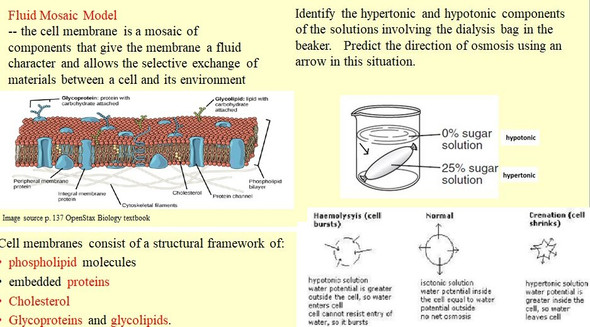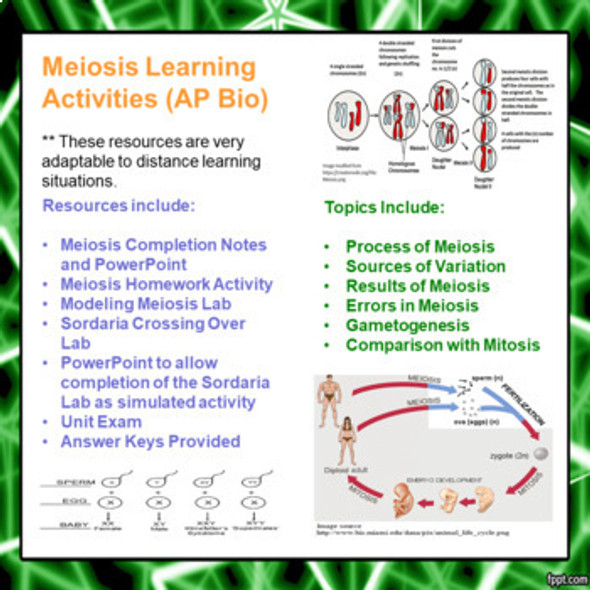Photosynthesis Learning Activities for AP/Advanced Biology (Distance Learning)
- Bulk Pricing:
- Buy in bulk and save
- Contributor:
- Monday's Rescue
- Grade Level:
- 9-12
- Product Type:
- Learning Package (Notes, PowerPoint, Homework)
- File Type:
- doc, pdf, ppt
- Pages:
- 37
- Answer Key:
- Yes
Description
This package of learning materials addresses topics taught in AP Biology or other upper level biology classes on the topic of photosynthesis. Some of the topics addressed pertaining to photosynthesis include an overview of photosynthesis, evolution of photosynthesis, chlorophylls and accessory pigments, leaf cross sectional structures and their role in photosynthesis, light independent reactions (photosystems II and I), the light dependent reactions, photorespiration and C-4/CAM metabolism. The specific learning objectives and standards are addressed at the end of the package description. This unit has been correlated to updated 2019-2020 AP Biology ETS learning objectives, as well as the NGSS and Common Core learning standards.
All materials are may be modified by you to suit your needs and those of your students. Documents are available in both word and pdf format. These learning materials are well suited for a distance learning situation.
The file contains 37 pages of student learning materials and one 53 slide PowerPoint.
The answer keys to all activities are included.
The specific contents of the learning package includes the following items (the page count for these items are actual student handouts as answer key page counts are not included):
--Learning Goals, NGSS Correlations, ETS AP Biology and Common Core Learning standards correlations (3 pages)
-- Photosynthesis Completion Notes (15 pages)
-- PowerPoint to accompany the Cell Respiration and Aspects of Thermoregulation Completion Notes (49 slides)
-- Photosynthesis Reading Worksheet (correlated to the free Openstax Biology text but can be used with other information sources) (10 pages/53 short answer questions)
-- Links to other web based Photosynthesis Free Online Resources (2 pages)
-- Photosynthesis Exam (45 multiple choice/matching, modified true-false questions and 2 short answer questions) (7 pages)
College Board ETS AP Biology Objectives
Enduring Understanding
ENE-1 The highly complex organization of living systems requires constant input of energy and the exchange of macromolecules.
Learning Objectives
ENE-1.I Describe the photosynthetic processes that allow organisms to capture and store energy.
ENE1.J Explain how cells capture energy from light and transfer it to biological molecules for storage and use.
Photosynthesis Learning Goals (local)
Upon completion of the reading and discussion of this information, the student will be able to:
1. distinguish between autotrophic and heterotrophic nutrition.
2. describe the structure of the chloroplast and how these structures relate to their function.
3. write a summary equation for photosynthesis.
4. list the wavelengths of light that are most effective for photosynthesis.
5. describe the role of accessory pigments in plants.
6. label the following structures in a plant leaf cross section and state their functions; upper epidermis, palisade layer, spongy layer, vascular bundles, lower epidermis, guard cells, stomata, and the cuticle.
7. explain what happens when chlorophyll or accessory pigments absorb photons.
8. list the components of a photosystem and explain their function.
9. trace electron flow through photosystems II and I.
10. compare cyclic and noncyclic electron flow and explain the relationship between these components of the light reactions.
11. summarize the chief results of the light reactions.
12. discuss the role of rubisco and PGAL in the Calvin cycle and state the chief result of this cycle.
13. describe the role of ATP and NADPH produced in the light reactions in the Calvin cycle.
14. describe what happens to rubisco when the O2 concentration is much higher than CO2
15. discuss the major consequences of photorespiration.
16. discuss two important photosynthetic adaptations that minimize photorespiration.
17. compare and contrast C-4, C-3, and the CAM pathways of photosynthesis.
18. discuss the evolution of photosynthesis and relate the endosymbiont hypothesis to the evolution of the chloroplast in eukaryotes.
NGSS Standards
HS-LS1-5. Use a model to illustrate how photosynthesis transforms light energy into stored chemical energy.
HS-LS1-6. Construct and revise an explanation based on evidence for how carbon, hydrogen, and oxygen from sugar molecules may combine with other elements to form amino acids and/or other large carbon-based molecules.
Common Core State Standards Connections:
ELA/Literacy
RST.11-12.1 Cite specific textual evidence to support analysis of science and technical texts, attending to important distinctions the author makes and to any gaps or inconsistencies in the account.
WHST.9-12.2 Write informative/explanatory texts, including the narration of historical events, scientific procedures/ experiments, or technical processes.
WHST.9-12.9 Draw evidence from informational texts to support analysis, reflection, and research.
Mathematics
MP.4 Model with mathematics.
Terms of Use
Purchase of the product is for classroom use by the purchaser only. It is a violation for individuals, schools, and districts to redistribute, sell, or post this item on the Internet.
This work is licensed under a Creative Commons Attribution-NonCommercial-ShareAlike 4.0 International License.
This learning package bundle is part of the AP Biology Complete Course. The complete course contains 22 learning package bundles in addition to this one. Save nearly 60% over the cost of buying 23 individual unit learning bundles with your purchase of the complete course.
Check out Monday's Rescue for more great resources!














